Originele Sweetheart Stanley 45 USA in houten kist, met alle extra's en beitels. geschatte fabricage tussen 1896 - 1909
Zie foto's
Bieden naar waarde.
Zie foto's
Bieden naar waarde.
Features1: Adjustable fence and depth stop, slitter and spurs, 18 to 23 interchangeable cutters, depending on vintage. Manufactured1: 1883 to 1962 Patents1: Justus Traut's 3/11/1884 (basic patent) — F.A. Rappleye's 10/24/1882 (slitting cutter) -Traut's 2/19/1884 (plane bit gauge) — Traut's 2/23/1886 (hollows & rounds) — Traut & E.A. Schade's 1/22/1895 (mechanical cutter adjustment) — Traut's 7/9/1901 (cam rest) Dimensions1: 10-1/2 inches long; 11-1/2 inches long in 1897 and later. Cutters: 23 provided (as few as 18 with earlier types). Cutters were provided in one fitted wooden box with lid. Later sets were supplied in two fitted boxes. Construction1: Cast iron, rosewood handles and fence Finish1: Japanning from 1883-1889; nickel plated in 1890 and later. User Info1: Plow, dado, rabbet, fillister, match and sash work and heading of all types. A fantastic plane to use and one that every serious woodworker should own. Sharpen the beading and sash cutters on the flat surface only to maintain profile of cutter. Read the instruction manual and practice using this plane until you master the functions, and start out on softwood before going to hardwood. Mastering the No. 45 is the stepping stone to proficiency with the No. 55. Average Price1: $150 to $350 Plane Only1: $25 to $75 (without cutters) Type 2-31 $200 to $400 (1886 to 1889) Type 11: $250 to $500 (1883 to 1885) Optional Items1: Standard cutter set (18-23)...... $75 to $125 (boxed) Special cutter set (23) .............$400 to $800 (boxed) #5 nosing tool .......................... $50 to $125 # 6 hollow & round ..................$75 to $150 # 8 hollow & round .................. $75 to $150 #10 hollow & round ................. $75 to $150 #12 hollow & round ................. $75 to $150 Complete set of hollows, rounds and nosing tool ......................$600 to $800 (Prices for hollows and rounds include cutters) Special Notes on Stanley's No. 45 Stanley applied at least twenty improvements and design changes to the No. 45, their best selling combination plane. The No. 45 is the predecessor to one of the most ingenious planes ever designed, the No. 55 Universal Plane. Several English firms have manufactured a 45 style plane since Stanley discontinued production of it, but no modern version even comes close to the quality of Stanley's original. Stanley 45 planes are in big demand by woodworkers today, and in this author's opinion, they are undervalued considering that reproduction models cost about twice the current price of a vintage, good user quality Stanley No 45. Woodworkers generally prefer the No 45 models manufactured after 1915 as they have all of the patent improvements. With regard to value, having a complete plane with all its parts is a most important consideration along with vintage and condition. See the list of parts in the Type Study. According to Stanley No. 45 collector and authority, Dave Heckel, the Types 7, II, 12, 15 and 16 are very common. Types 3, 4, 8, 9, 14 and 17 fairly common, Types 1,2,5,10,13 and 20 are scarce and Types 6, 7a, 18, 19 and 19a are very scarce. (Look forward to a new publication on the No. 45 plane by Dave sometime in the near future.) Stanley offered many optional items for the No. 45. These included a special set of 23 cutters including beads and reeds, etc., and a series of eight hollow and round bottoms with corresponding cutters, patented in 1884. Prices quoted for these items include the cutters. Stanley added a nosing tool in 1888. The extra bottoms were japanned from 1884 to 1889 and nickel plated from 1890 to 1942. Stanley further improved the basic plane by adding a cam stop in 1901. The first type had a thumbscrew for attaching it to the rods and had a tendency to break. Later versions had a stronger solid piece of iron attached with a slotted screw. Other patent improvements are listed in the No 45 Type Study. Stanley gradually increased the number of cutters supplied with this plane. 1883 to 1896 .......................... 18 cutters 1896 to 1909 .......................... 20 cutters 1910 to 1920 .......................... 21 cutters 1921........................................ 22 cutters 1922 and later ....................... 23 cutters Types I to 4 did not have a notch in the top of the cutters. A mechanical screw regulated the cutter adjustment wheel provision beginning in 1896 and later. Other parts originally supplied were an integral, and a screw regulating depth stop provided on the front right hand side of the main frame. A slitter and a rear depth stop were provided on the right rear side of the main frame. These are often missing. Two depth stops were provided for the auxiliary sliding section. One is short, the other, sometimes called the heading gauge, is longer. On later models this is of two-piece construction. Sometimes one or both of these stops are missing. Finally two sets of arms, long and short. Stanley included an instruction booklet as well. These are usually missing and can sell by themselves for $20 to $40. Any of these smaller parts sell for $15 to $30 each. A complete No 45 includes two sets of arms (long and short), heading stop, cam rest, depth stop, and instruction book; please see the Type Study for complete parts list. Earlier types have a japanned finish. An issue of Stanley's "Tool Talks" published in the 1930's, titled "It's a Big Job Assembling and Packing the No 45 Plane," reported that approximately 1,800 separate casting, machining and assembly operations were required to made each No 45 and that a total of 100 parts were used. Regarding packaging, Stanley sold the earlier types in a pasteboard box. In the 1890's they used a chestnut box and around the 'teens, used a tin box with a sliding lid. During the 1920's, the pasteboard box was used again. In the 1930's, Stanley used a hinged tin box and in the 40's it was back to pasteboard for the third time. Also a softwood hinged box painted yellow box is known during the 1940s, then after that, it was back to the pasteboard (4th time) until 1962 when the company discontinued manufacture of the No 45. Please see the Type Study for more information on Stanley's combination planes. Final Note: Stanley made the Type 1,A45 (aluminum) plane from the same mold as their standard production, iron frame No 45, and the Type I, A45 castings read "No 45." Subsequent models will have the 'A' prefix. Manufactured c. 1915 to 1921 the aluminum model 45s are worth considerably more than the cast iron. See the listing for the A45 at the end of this section. |
Bijlagen
-
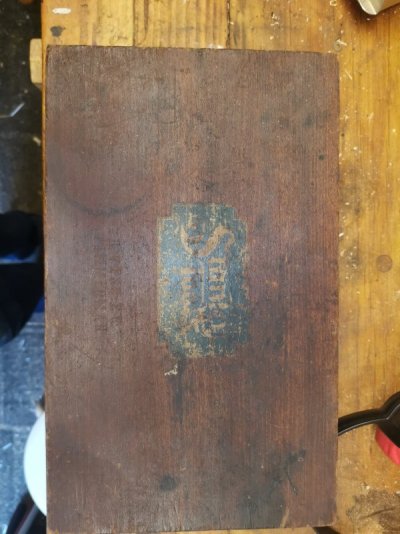 IMG_20210830_150423.jpg96,9 KB · Weergaven: 53
IMG_20210830_150423.jpg96,9 KB · Weergaven: 53 -
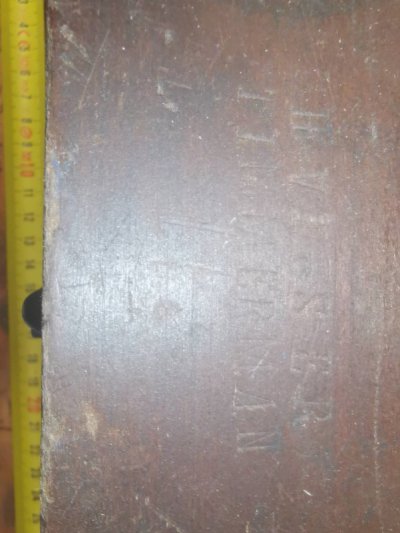 IMG_20210830_150435.jpg77 KB · Weergaven: 48
IMG_20210830_150435.jpg77 KB · Weergaven: 48 -
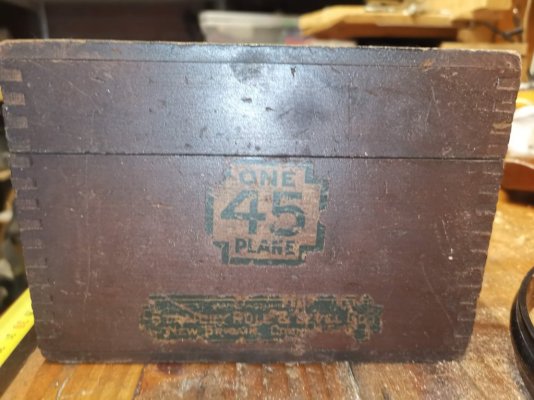 IMG_20210830_150445.jpg124,3 KB · Weergaven: 44
IMG_20210830_150445.jpg124,3 KB · Weergaven: 44 -
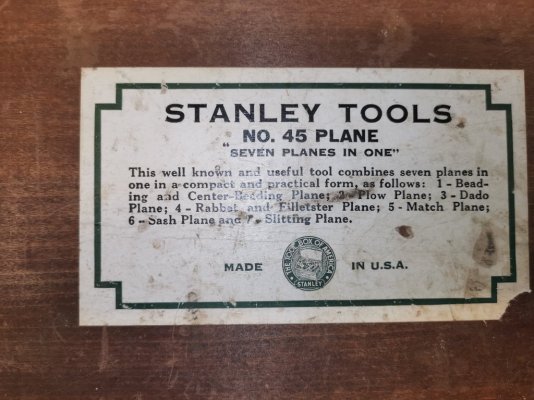 IMG_20210830_150452.jpg157,3 KB · Weergaven: 42
IMG_20210830_150452.jpg157,3 KB · Weergaven: 42 -
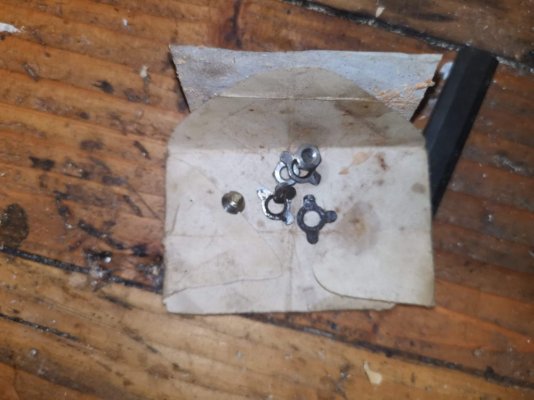 IMG_20210830_150616.jpg100,3 KB · Weergaven: 41
IMG_20210830_150616.jpg100,3 KB · Weergaven: 41 -
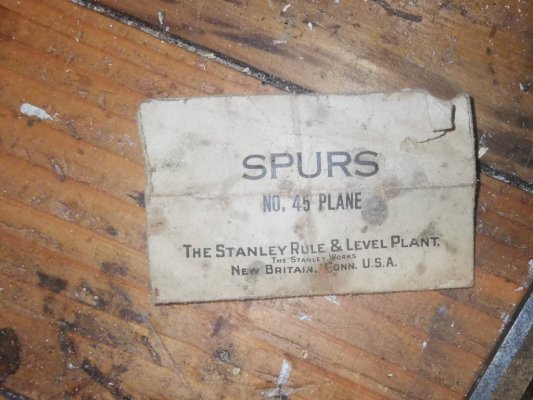 IMG_20210830_150623.jpg157,6 KB · Weergaven: 44
IMG_20210830_150623.jpg157,6 KB · Weergaven: 44 -
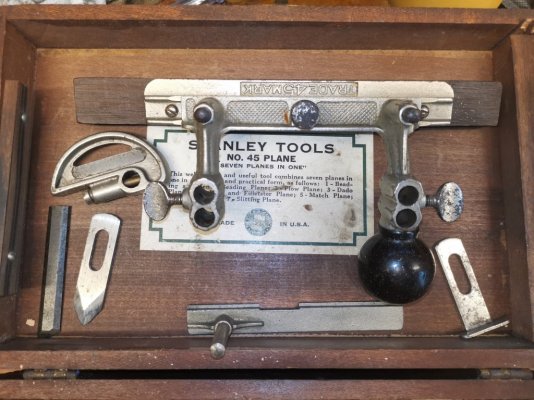 IMG_20210830_150657.jpg179 KB · Weergaven: 66
IMG_20210830_150657.jpg179 KB · Weergaven: 66 -
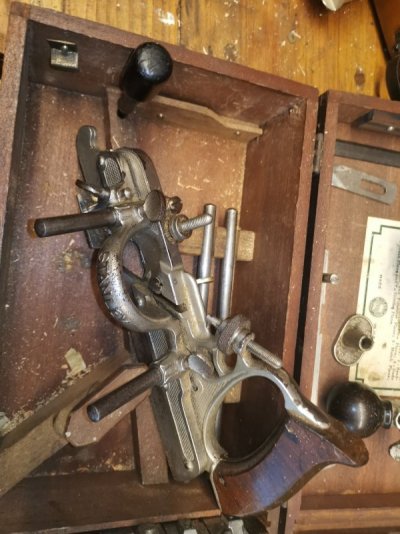 IMG_20210830_150721.jpg102 KB · Weergaven: 65
IMG_20210830_150721.jpg102 KB · Weergaven: 65 -
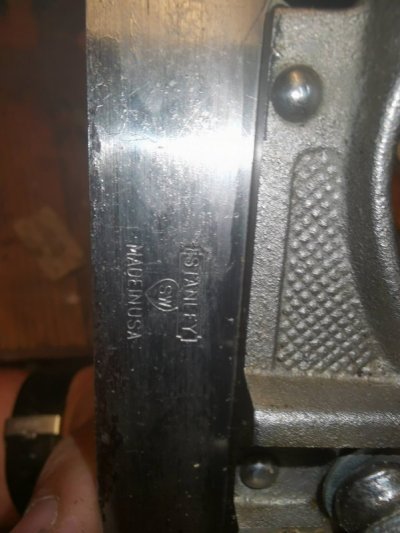 IMG_20210830_150731.jpg78,7 KB · Weergaven: 65
IMG_20210830_150731.jpg78,7 KB · Weergaven: 65 -
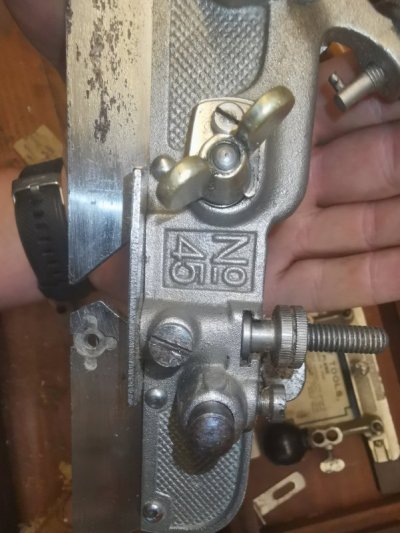 IMG_20210830_150740.jpg96,7 KB · Weergaven: 51
IMG_20210830_150740.jpg96,7 KB · Weergaven: 51

